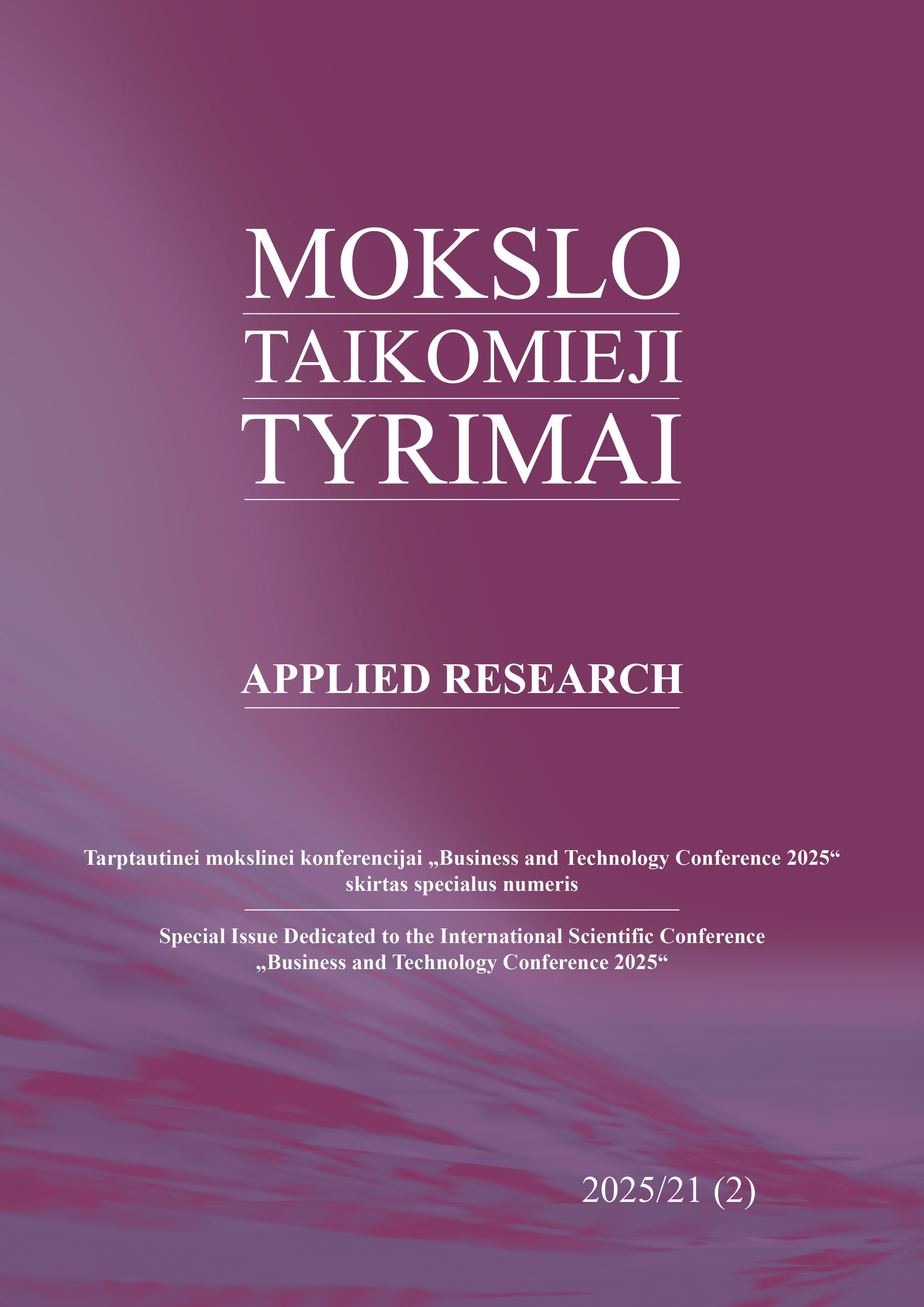Market concentration, asset allocation in banking: implications for financial stability and competitive dynamics
DOI:
https://doi.org/10.59476/mtt2025.v2i21.731Keywords:
market concentration, Herfindahl-Hirschman index (HHI), asset allocation, banking sector, financial stability, systemic risk, risk managementAbstract
This study examines the relationship between market concentration and asset allocation in the banking sector, with a particular focus on the Albanian banking industry. Using the Herfindahl-Hirschman Index (HHI) as a measure of market concentration, we analyze how banks allocate their assets between traditional lending and investments in government securities. The findings indicate a growing preference for risk-averse investment strategies, particularly among large banks, which raises concerns about the decline in credit intermediation and its implications for profitability, systemic stability, and economic growth. The study also highlights the risks associated with excessive investment in sovereign debt, including interest rate risk, sovereign-bank nexus vulnerabilities, and reduced net interest margins (NIMs). The empirical analysis, based on HHI calculations for the Albanian banking sector, suggests that despite moderate market concentration, a small number of banks hold a dominant share of assets, deposits, and government debt financing, leading to potential systemic risks. The findings underscore the need for balanced asset allocation strategies, enhanced risk management frameworks, and regulatory incentives to promote sustainable lending practices. This research contributes to the ongoing discourse on banking sector competitiveness, financial stability, offering policy recommendations to ensure banks maintain their core function as credit intermediaries while navigating regulatory and market challenges.
References
1. Acharya, V. V., Shin, H. S., & Yorulmazer, T. (2011). Crisis resolution and bank liquidity. The Review of Financial Studies, 24(6), 2166–2205. https://doi.org/10.1093/rfs/hhq105
2. Adam, T. R. (2008). Bank asset and liability management: Strategy, trading, analysis. Wiley.
3. Allen, F., Carletti, E., & Gu, X. (2008). The roles of banks in financial systems. The Oxford handbook of banking, 3, 39–61. https://doi.org/10.1093/oxfordhb/9780199688500.013.0002
4. Almeida, H., Campello, M., & Hackbarth, D. (2011). Liquidity mergers. Journal of Financial Economics, 102(3), 526–558. https://doi.org/10.1016/j.jfineco.2011.08.002
5. Baron, M., Schularick, M., & Zimmermann, K. (2023). Survival of the biggest: Large banks and financial crises. https://dx.doi.org/10.2139/ssrn.4189014
6. Koutsomanoli-Filippaki, A., Margaritis, D., & Staikouras, C. (2009). Efficiency and productivity growth in the banking industry of Central and Eastern Europe. Journal of Banking & Finance, 33(3), 557–567. https://doi.org/10.1016/j.jbankfin.2008.09.009
7. Bikker, J. A. (2004). Competition and efficiency in a unified European banking market. Edward Elgar Publishing.
8. Cetorelli, N. (1999). Competitive analysis in banking: Appraisal of the methodologies. Economic Perspectives, 23(1), 2–15.
9. Correa, R., & Goldberg, L. S. (2022). Bank complexity, governance, and risk. Journal of Banking & Finance, 134, 106013. https://doi.org/10.1016/j.jbankfin.2020.106013
10. Farhi, E., & Tirole, J. (2018). Deadly embrace: Sovereign and financial balance sheets doom loops. The Review of Economic Studies, 85(3), 1781–1823. https://doi.org/10.1093/restud/rdx059
11. Guo, H., & Polak, P. (2024). Finance centralization—research on enterprise intelligence. Humanities and Social Sciences Communications, 11(1), 1–9. https://doi.org/10.1057/s41599-024-04098-8
12. Hoskisson, R. E., Hill, C. W., & Kim, H. (1993). The multidivisional structure: organizational fossil or source of value? Journal of Management, 19(2), 269–298. https://doi.org/10.1016/0149-2063(93)90055-R
13. Markowitz, H. (1952). Portfolio selection. The Journal of Finance, 7(1), 77–91. https://doi.org/10.2307/2975974
14. Tu, Y., Sheng, B., Tu, C. H., & Chiu, Y. H. (2024). Evaluating Bank Efficiency with Risk Management by Optimal Common Resource and Three-Parallel Two-Stage Dynamic DEA Model. Computational Economics, 1–27. https://doi.org/10.1007/s10614-024-10682-6
15. Vives, X. (2016). Competition and stability in banking: The role of competition policy and regulation. Princeton University Press.
16. Wagner, W. (2007). Aggregate liquidity shortages, idiosyncratic liquidity management, and banking regulation. Journal of Financial Stability, 3(1), 18–32. https://doi.org/10.1016/j.jfs.2007.01.001
17. Wheelock, D. C., & Wilson, P. W. (2012). Do large banks have lower costs? New estimates of returns to scale for U.S. banks. Journal of Money, Credit and Banking, 44(1), 171–199. https://www.jstor.org/stable/41336819
18. Acharya, V. V., Drechsler, I., & Schnabl, P. (2014). A pyrrhic victory? Bank bailouts and sovereign credit risk. Journal of Finance, 69(6), 2689–2739. https://doi.org/10.1111/jofi.12206
19. Demirgüç-Kunt, A., & Huizinga, H. (2010). Bank activity and funding strategies: The impact on risk and returns. Journal of Financial Economics, 98(3), 626–650. https://doi.org/10.1016/j.jfineco.2010.06.004
20. Farhi, E., & Tirole, J. (2012). Collective moral hazard, maturity mismatch, and systemic bailouts. American Economic Review, 102(1), 60–93. https://doi.org/10.1257/aer.102.1.60
21. Gropp, R., Gruendl, C., & Guettler, A. (2011). The impact of public guarantees on bank risk-taking: Evidence from a natural experiment. Review of Finance, 15(4), 703–737. https://doi.org/10.1093/rof/rft014
22. Honohan, P., & Klingebiel, D. (2003). The fiscal cost implications of an accommodating approach to banking crises. Journal of Banking & Finance, 27(8), 1539–1560. https://doi.org/10.1016/S0378-4266(02)00276-5
23. IMF. (2021). Albania: 2021 Article IV Consultation-Press Release; Staff Report; and Statement by the Executive Director for Albania. International Monetary Fund.
24. Laeven, L., & Valencia, F. (2018). Systemic banking crises revisited. IMF Working Paper.
Downloads
Published
Issue
Section
License
Copyright (c) 2025 Ada Aliaj, Ikbale Tota, Olta Nexhipi

This work is licensed under a Creative Commons Attribution 4.0 International License.

